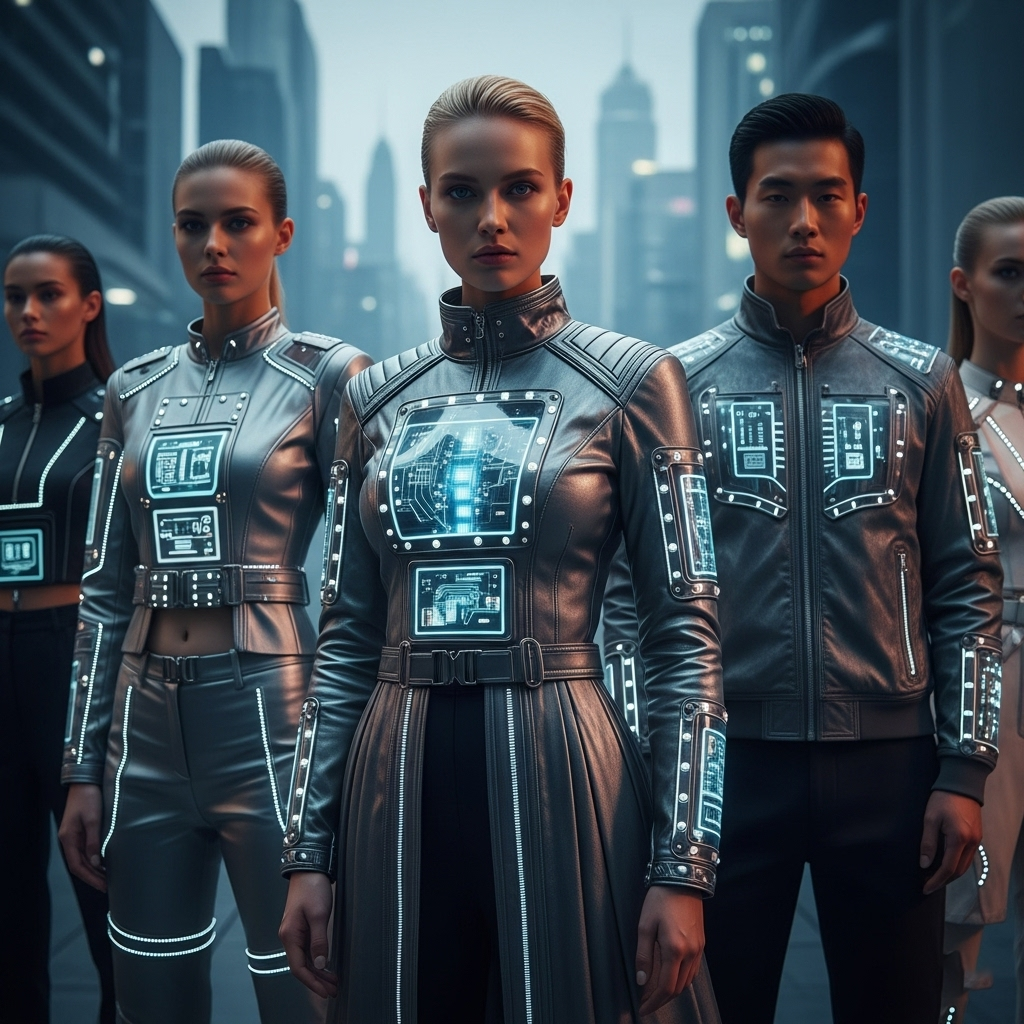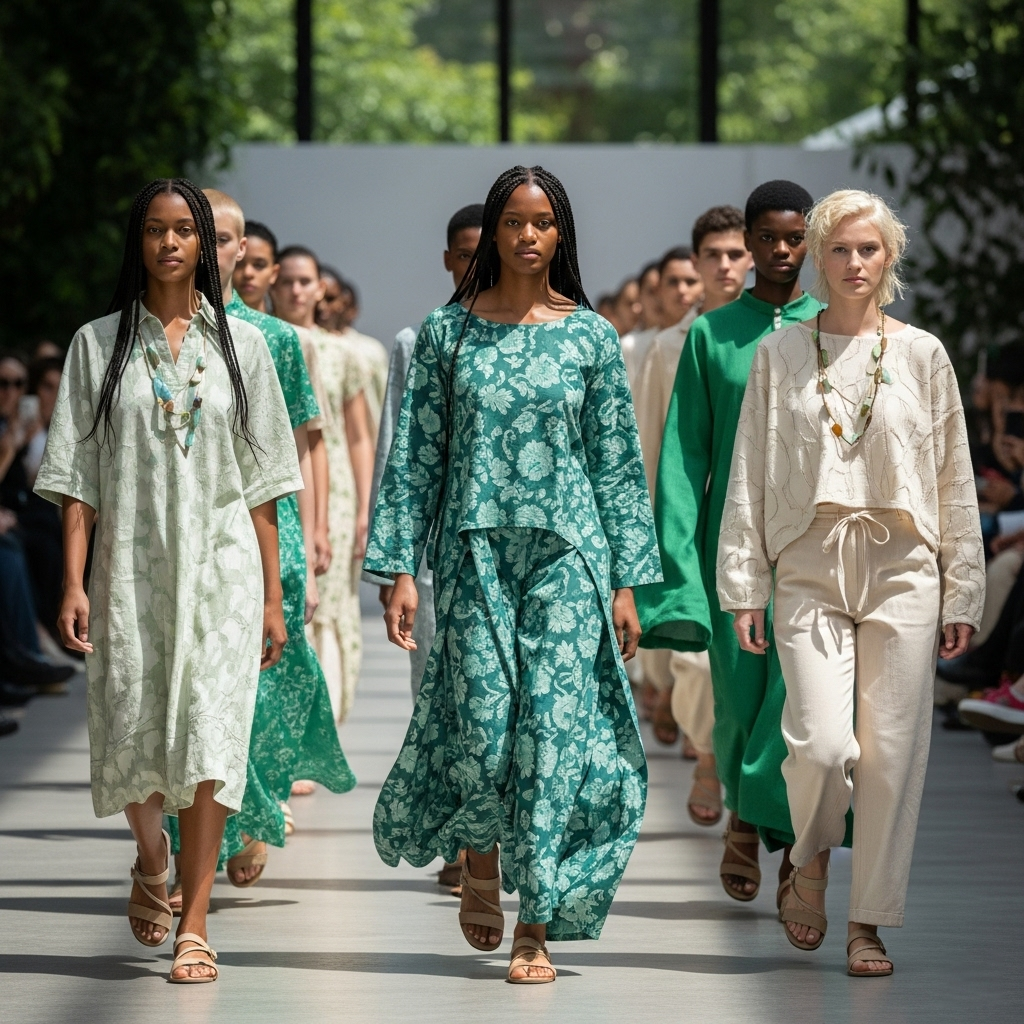No products in the cart.: $0.00
Fashion and Technology: A Futuristic Fusion

The intersection of fashion and technology is creating a dynamic and rapidly evolving landscape, promising a future where our clothing is not just about aesthetics but also about functionality, interactivity, and even intelligence. From smart fabrics and wearable technology to 3D printing and virtual fashion, the fusion of these two seemingly disparate worlds is poised to revolutionize how we design, produce, wear, and experience clothing.
One of the most exciting areas of this fusion is the development of smart fabrics and wearable technology. Textiles are being embedded with sensors, conductive yarns, and microprocessors that can monitor vital signs, track movement, regulate temperature, and even interact with other devices. Imagine a shirt that tracks your heart rate during a workout or a jacket that adjusts its warmth based on the weather.
Wearable technology is also extending beyond clothing to accessories like smartwatches and fitness trackers, which have seamlessly integrated into our daily lives. As technology becomes smaller and more sophisticated, we can expect to see even more discreet and functional tech-integrated fashion items.
3D printing is another transformative technology with the potential to revolutionize fashion design and manufacturing. Designers can create intricate and customized garments and accessories directly from digital designs, reducing waste and enabling greater personalization. On-demand production through 3D printing could also disrupt traditional supply chains and make fashion more accessible and sustainable.
Virtual and augmented reality (VR/AR) are also making their mark on the fashion industry. VR can offer immersive shopping experiences, allowing consumers to virtually try on clothes and explore different styles from the comfort of their homes. AR can overlay digital information onto the real world, providing interactive fashion experiences and personalized style recommendations.
The rise of digital fashion is a fascinating and increasingly relevant aspect of this futuristic fusion. Virtual clothing and avatars are gaining popularity in the digital realm, offering new forms of self-expression in online spaces. Digital fashion can also be a more sustainable alternative to physical clothing, reducing the environmental impact associated with production and consumption.
Artificial intelligence (AI) is playing an increasingly significant role behind the scenes in the fashion industry. AI-powered tools can analyze trends, optimize supply chains, personalize shopping experiences, and even assist designers in the creative process. This data-driven approach has the potential to make the industry more efficient, responsive, and tailored to individual consumer needs.
The fusion of fashion and technology also raises important questions about privacy, data security, and the ethical implications of embedding technology into our clothing. As our garments become more connected and data-driven, it will be crucial to address these concerns and ensure responsible innovation.
Despite these challenges, the potential benefits of this fusion are immense. Technology can make fashion more functional, personalized, sustainable, and even more expressive. It can enhance our experiences, connect us in new ways, and push the boundaries of creativity in both the physical and digital realms.
As technology continues to advance at an exponential rate, we can expect the lines between fashion and technology to become increasingly blurred. The future of fashion is likely to be characterized by innovative materials, intelligent garments, personalized experiences, and a seamless integration of the digital and physical worlds of style.
In conclusion, the futuristic fusion of fashion and technology holds immense potential to transform the industry in profound ways. From smart fabrics and 3D printing to virtual reality and artificial intelligence, these innovations are paving the way for a future where our clothing is not just about how we look, but also about what it can do and how it connects us to the world around us.




